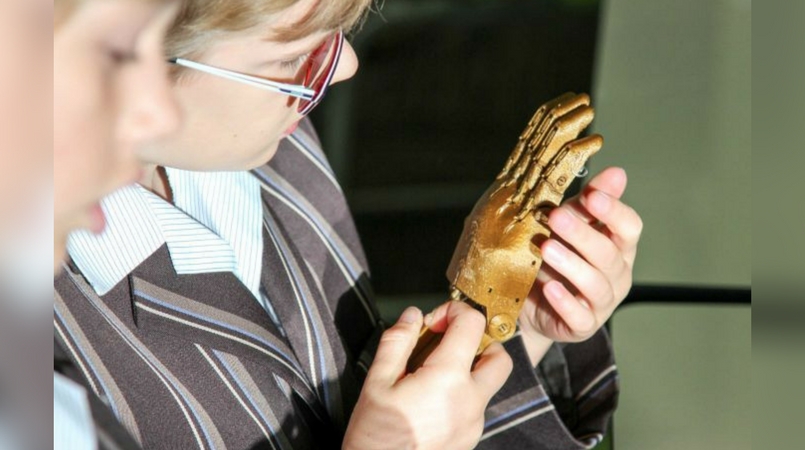
A class of Melbourne year seven students is using 3D printers to make prosthetic hands for people born without limbs or those who have lost them.
Ivanhoe Grammar School has partnered with e-NABLE, a community of online 3D designers, so students can learn how to make and produce prosthetics.
Steve Brophy, the school's director of information and communication technology and eLearning, said the school had used 3D printers for years but was looking for more meaningful projects.
"We wanted to move past the kids just printing knick-knacks and thinking that things like bobble heads and little toy cars were good enough.
"And we're really trying to, as a school, introduce them to cutting-edge technology that will allow them to help humanity."
By partnering with e-NABLE, Mr Brophy said his students were now thinking like designers and considering the needs of others.
Prosthetic just $50 to make
Mr Brophy said the project was still in its infancy.
"Kids are learning the mechanics of it and how to troubleshoot it if it's not working, so they're understanding tension, how to work with thermoplastic and how to melt it and mould it," he said.
"Our next step is for them to make a hand which is scaled to their own hand, so that will allow them to walk in the shoes of someone with a lower limb deficiency."
Once the students are confident with the prosthetic hand prototypes, Mr Brophy said they would contact people in need of prosthetics in Melbourne and regional Victoria.
"It's also about understanding that it's about connecting with the client," Mr Brophy said.
"So the kids are understanding if they are providing a service that they have to keep their customer happy and they have to understand and work with them."
Mr Brophy said it cost $50 in materials to make a 3D-printed prosthetic hand, which is considerably cheaper than a traditionally produced prosthetic.
And while the medical industry is yet to embrace 3D printers to produce prosthetics, Mr Brophy said he believed it was an inevitable progression.
Would you let a 12-year-old make you a prosthetic?
While Mr Brophy said he expected some pushback from those sceptical of a child's ability to make a robust prosthetic, he said with enough support they could do anything.
"Kids, if you empower them, can do great things and I think if they've got enough skill and they've got enough support, of course they can do anything," he said.
"But people will still be apprehensive about it."
Speaking with a group of Mr Brophy's year seven students, they passionately explained the project and lengths they had gone to so far to perfect their first prosthetic hand.
"It feels really cool because we see Mr Brophy's at the start and it looks like that and it's really cool," Eloise said.
And when asked how it would feel to provide someone with a prosthetic hand, 12-year-old Sophie responded: "I'll feel good and proud that we could do something for someone like that."
